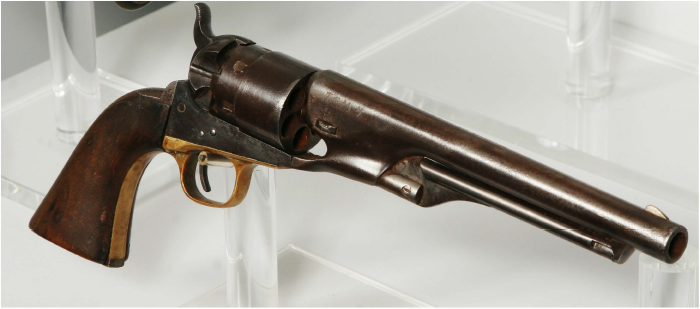On a cold, rainy morning, Colonel Tom Harrison, of the 8th Texas Cavalry, scanned the field ahead with his binoculars, looking for Union activity. With sabers drawn, the15th Pennsylvania Cavalry Regiment came into view. Harrison smiled before turning to his men. “Now boys, we will have some fun,” he said. “There is a regiment out there preparing to charge us with sabers. Let them come nearly close enough to strike and then feed them with buckshot.” The Pennsylvanians charged while the Texans cooly stood their ground. Before they could close in with their sabers, the Texans released a devastating volley, emptying many saddles and forcing the survivors to retreat. For the 15th Pennsylvania, It was a painful lesson learned; sabers and swords were no longer useful in a cavalry fight, especially when you’re up against Terry’s Texas Rangers.
Since the Spanish Colonial Period, Texans learned the value of a good horse and overwhelming firepower. Because of the long distances involved and the deadly adversaries they faced, such as Mexican lancers and Comanche warriors, cavalry became the military arm of choice for Texans. Known as the greatest horsemen on the American continent, if not the world, it was useless to confront Comanches with footslogging infantry and their mule-driven supply wagons. Texans realized a different approach was needed on the vast, hostile frontier. From the Comanches and Kiowas, they learned the tactics of mobile warfare. From the Mexicans, they learned the basics of frontier horsemanship and riding apparel. Marksmanship came from their ancestors in the United States, especially from states like Tennessee known for firearm expertise such as the use of the long barrel musket. With the formation of the Texas Rangers, all that learning and experience was about to pay off.
Organized in September 1861 by Benjamin F. Terry and Thomas Lubbock, the 8th Texas Cavalry or Terry’s Texas Rangers were recruited mostly from the central and gulf coast regions of Texas. Each man was to furnish his own pair of revolvers, horse, bridle, saddle, and rifle or shotgun. As the war progressed, the double barrel shotgun became their chosen weapon. As for revolvers, the.36 caliber Colt Navy revolver was the overwhelming favorite. Because of the problem of reloading while riding, each ranger carried 4 to 5 revolvers.
To widen the scattering of the shot, the shotgun barrels were shortened. It also made the shotgun easier to shoot on horseback. Though their accuracy was compromised, they were deadly at close range. One shotgun blast could wound or kill more than one man. By closing in quickly with their horses and then releasing a massive shotgun volley, a Union line of cavalry or infantry could disintegrate into confusion and chaos, especially if they were in the middle of reloading. According to one Ranger, “One volley from the shotguns into their ranks scattered these saber men into useless fragments of a force.”

A preview of coming attractions came at Woodsonville, Kentucky on December 17, 1861. Colonel August Willich, of the 32nd Indiana Infantry, gave the best description of the Rangers’ attack: “With lightening speed, under infernal yelling, great numbers of Texas Rangers rushed upon our whole force, some of them even between them, and opened fire with rifles and revolvers.” Paired with sheer audacity, it was a method of attack the Rangers excelled at until the end of the war.









No comments:
Post a Comment